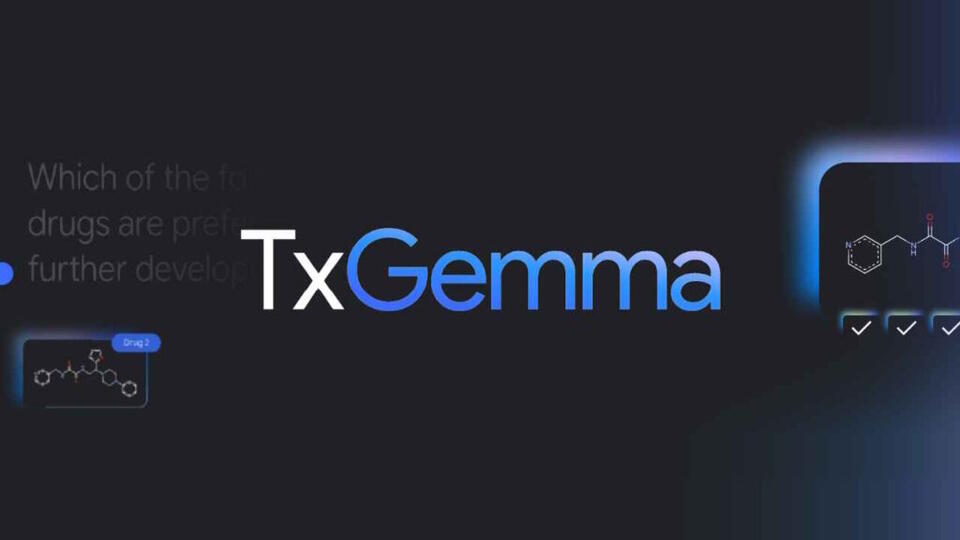TxGemma by Google DeepMind Advances Drug Discovery Through AI, One Molecule at a Time

Introducing TxGemma: A New Era in Biomedical Research
Google DeepMind has made a significant advancement in the field of biomedical research with the launch of TxGemma. This is an innovative suite of open-source AI models aimed at aiding in the development of therapeutics. Officially released in late March 2025, TxGemma stands out due to its user-friendliness, allowing use on standard consumer-grade hardware while integrating seamlessly with specialized biomedical processes.
Key Features of TxGemma
The TxGemma package provides predictive models that evaluate proteins and compounds, including an interactive conversational agent powered by Gemini 1.5 Pro. This not only automates many scientific research tasks but is also accessible via platforms like Hugging Face and Vertex AI. Moreover, hands-on experimentation is facilitated through Colab notebooks.
Models Tailored for Biomedical Applications
TxGemma offers several core models that have been trained on domain-specific data, with parameter sizes of 2 billion, 9 billion, and 27 billion. The larger models allow for conversational interaction, which can be highly beneficial for researchers looking for more dynamic discussions.
These models draw from the Therapeutics Data Commons (TDC), enabling them to analyze chemical sequences, proteins, diseases, and cell lines effectively. According to Google’s official documentation, the TxGemma models are designed to simplify the evaluation and development of machine learning solutions for therapeutic purposes.
Agentic-Tx: A Versatile Research Assistant
The TxGemma release also features Agentic-Tx, which offers capabilities beyond simple predictions. This tool is equipped to manage entire research workflows, utilizing the reasoning capabilities of Gemini 1.5 Pro along with tools like AlphaFold and various literature search systems.
Agentic-Tx takes researchers through an interactive process, allowing them to begin with a query—such as locating protein binding sites—before receiving iterative responses supported by relevant biological reasoning.
The Foundation of Gemma 2
TxGemma is built on the earlier Gemma 2 architecture, which consists of decoder-only transformer models optimized for efficient deployment, even on mobile devices. This modular framework promotes open research workflows, making it well-suited for biomedical applications.
While the newly released Gemma 3 includes improvements like multimodal support and enhanced linguistic capabilities, these features aren’t integrated into TxGemma. However, the close timing of their releases emphasizes Google’s intention to transition AI tools from general uses into specific scientific disciplines.
The Importance of Open Access in Therapeutics
The open-source nature of TxGemma is a strategic decision aimed at fostering transparency and reproducibility in biomedical research. By making its models and tools available on widely accessible platforms, DeepMind aims to bridge gaps for academic institutions, biotech startups, and researchers, particularly in settings with limited resources.
DeepMind’s mission is to facilitate quicker and more reliable drug discovery processes.
Limitations and Cautions
Despite its promising capabilities, the real-world application of TxGemma must be approached prudently. While quantized models enhance efficiency, they often come with compromises in precision. Furthermore, Agentic-Tx’s dependency on external tools may introduce vulnerabilities, as the integration with specific workflows can vary.
Lastly, although the conversational interface offers flexibility, it may present challenges in regulated settings that require deterministic outputs. Independent assessments are necessary to validate the models’ predictions before their deployment in clinical or commercial environments.
A Research Toolkit for Exploration
TxGemma is not designed to be a comprehensive drug discovery solution. Instead, it serves as a modular framework that encourages researchers to explore, innovate, and adapt. With capabilities ranging from analyzing protein structures to evaluating toxicity, it fits seamlessly into existing scientific workflows without necessitating proprietary systems or vendor dependencies.
As more research labs, academic institutions, and computational biology startups adopt TxGemma, this development represents another significant move towards AI’s evolution from a general assistant to a specialized partner in scientific research.





